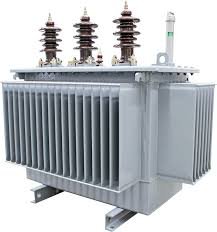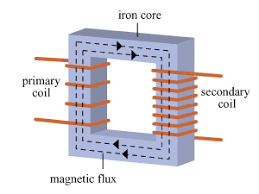The electricity used in homes comes from a large electric generating stations. These stations transmit electricity to regional substations, which then distribute it to its consumer.

As transmission lines resist current flow, the current loses energy as heat. The amount of power lost depends on current flow. Direct current (DC) regularly reverse its course.
Years ago, utility supplied DC for complex reasons, DC transmission was hard to control so the safety conscious utilities transmitted it at low voltages. But by the time DC reaches consumers, resistance had robbed it of 45% of its strength.
The solution was to transmit high-voltage alternate current (AC), which is easily converted by transformers.
As high-voltage transmission requires less current for the amount of power, they sacrifice less energy to resistance. When AC current leaves the utility, step-up transformers boost it up and step-down transformers reduce it to 110 or 220 volts used in homes.
How transformers work?
.jpg)
As a transformer is an electrical device for changing the size of an AC voltage, it works by electromagnetic induction. When it increases the size of an AC voltage, it is called step-up transformer and when it decreases the size of an AC voltage, it is called a step-down transformer.
The transformer consist of two coils, a primary coil and a secondary coil wound on a laminated soft iron (insulated from each other to reduce heat loses).
.png)
When the primary coil is connected to an AC source, an alternating current flows in it and this sets up an alternating magnetic flux in the iron core. This changing magnetic flux induces an alternating emf (electromotive force) of the same frequency in the secondary coil.
The magnitude of the induce emf depends on the emf at the primary coil.
EQUATION:
ES̲ = NS̲
NS NP
ES = secondary e.m.f
EP = primary e.m.f
NS = Number of turn in the secondary coil
NP = Number of turn in the primary coil
If NS>NP, then ES>Ep.
Such a transformer is called a step down transformer.
